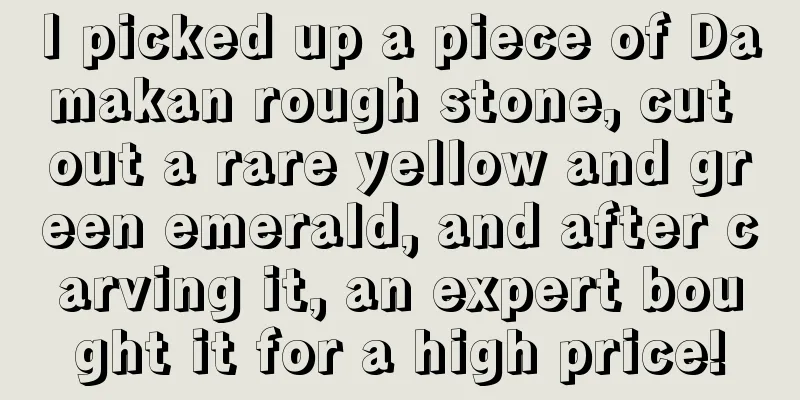Why does jade have lustre?

|
Jade is a jade stone with a polycrystalline interwoven structure. Simply put, it is a collection of countless translucent mirrors with their own reflective properties. The "mirrors" of jade not only reflect each other, but also shoot at each other. These optical reactions constitute what we often call the gloss of jade. In the jargon of the jade industry, the best quality light performances are fluorescent light, oily light and rigid light, followed by glass light and then waxy light. The worse performance is stone light. Fluorescence The luster of jade is actually a normal optical phenomenon. The micro-crystals inside the jade are arranged neatly and orderly, causing the overall refractive index to become more obvious after light enters the jade. The luminescence of jadeite with high transparency can be seen under natural light. For jadeite with low transparency, the fluorescence can only be reflected through strong artificial light sources. Jadeite of the glutinous grade and above may show the fluorescence phenomenon, and the closer the shape of the jadeite is to a perfect circle, the more obvious the fluorescence effect will be. Oily Light Oily sheen means that visually, we can see that the jade seems to have been brushed with oil. This requires the jade crystals to be quite fine. When light enters jade, the same beam of light is decomposed into many rays of uniform size that gradually diffuse. They are evenly distributed on the surface of jade crystals, ensuring the transparency of the jade while also reflecting the shape of the light when it shines on a single crystal. Rigid Light Rigid light represents the extraordinary transparency and reflective ability of jadeite crystals. Jade crystals are translucent. Relatively speaking, the intensity of reflected light determines the transparency quality of jade from the side. Jadeite with strong rigid light can also produce a similar glowing effect under natural light. Glass luster Vitreous luster is a light characteristic possessed by most jade products. Jadeite with a glassy luster usually has crystals of average quality and a relatively tight arrangement. Jadeite of younger quality is more likely to have an obvious glassy luster. This kind of jade is not very special, it is just ordinary, but it has good gloss and the price is relatively moderate. Waxy and stone light As for the waxy luster and stone luster, they usually appear on inferior jadeite. The main problem with jadeite of poor quality is that the crystals are loose, the quality is tender, and the light transmission effect is poor. No matter how good the water head of the jadeite is, it will have a loose visual effect. This is wax light. Stone luster, as the name suggests, means that jade is like stone and its luster is not strong. After polishing, jadeite with this kind of glossiness will hardly have the transparency of other types of jadeite. It lacks spirituality and looks like a piece of stone. fcgc66 fcpf18 |
<<: Jade is beautiful, but do you know its internal characteristics?
>>: Color is not everything about jade
Recommend
What does Jadeite Blue Water Type mean? What kind of blue water jade is good?
There are many ways to classify jade, and there a...
The boss paid a high price to buy this piece of emerald blue water material, and it turned out to be stunning after carving!
As we all know, for a piece of jadeite raw stone ...
Authoritative analysis of the meaning of jade
As the saying goes, "Jade must be crafted; t...
What are the precautions for wearing jade pendants? What is the meaning of common jade pendants?
As we all know, jade not only has rich colors, bu...
Secrets only known by insiders: Four steps to distinguish between A-grade, B-grade and C-grade jadeite
Friends who have been to scenic spots know that t...
This kind of jade has undergone special processing, but it shows as natural on the appraisal certificate! Insider Tips
Jade lovers all know that if you want to know whe...
When it comes to jadeite, what bargains can’t you take advantage of?
As the saying goes, if you don't take advanta...
How to judge the craftsmanship of jadeite carving?
For any piece of jade jewelry to be transformed f...
Don’t be afraid of cracked jadeite, as long as the carving is done well, it can still be a fine product.
When people buy raw stones, they are afraid of en...
Buy jade? Experts suggest you at least be aware of these jargons!
Every industry has its own jargon, and every sent...
In the jade carving world, jadeite skin carving is an art and a realm that is truly breathtaking.
With unique jade materials and innovative sculpto...
Why does jade become greener the more you wear it, while some jade becomes darker the more you wear it?
Many people like to buy and wear jade jewelry, bu...
A small egg, but its value is sky-high. The secret of its production process is revealed
The Value of Jade Egg-shaped Necklace Many friend...
What is the meaning of Guan Gong? The meaning of Guan Gong
There were many heroes in ancient China. The most...
Three pieces of exquisite and clean jade pieces, designed with the theme of horse brand, are really pleasing to the eyes!
What I’m going to share with you today is the pro...









